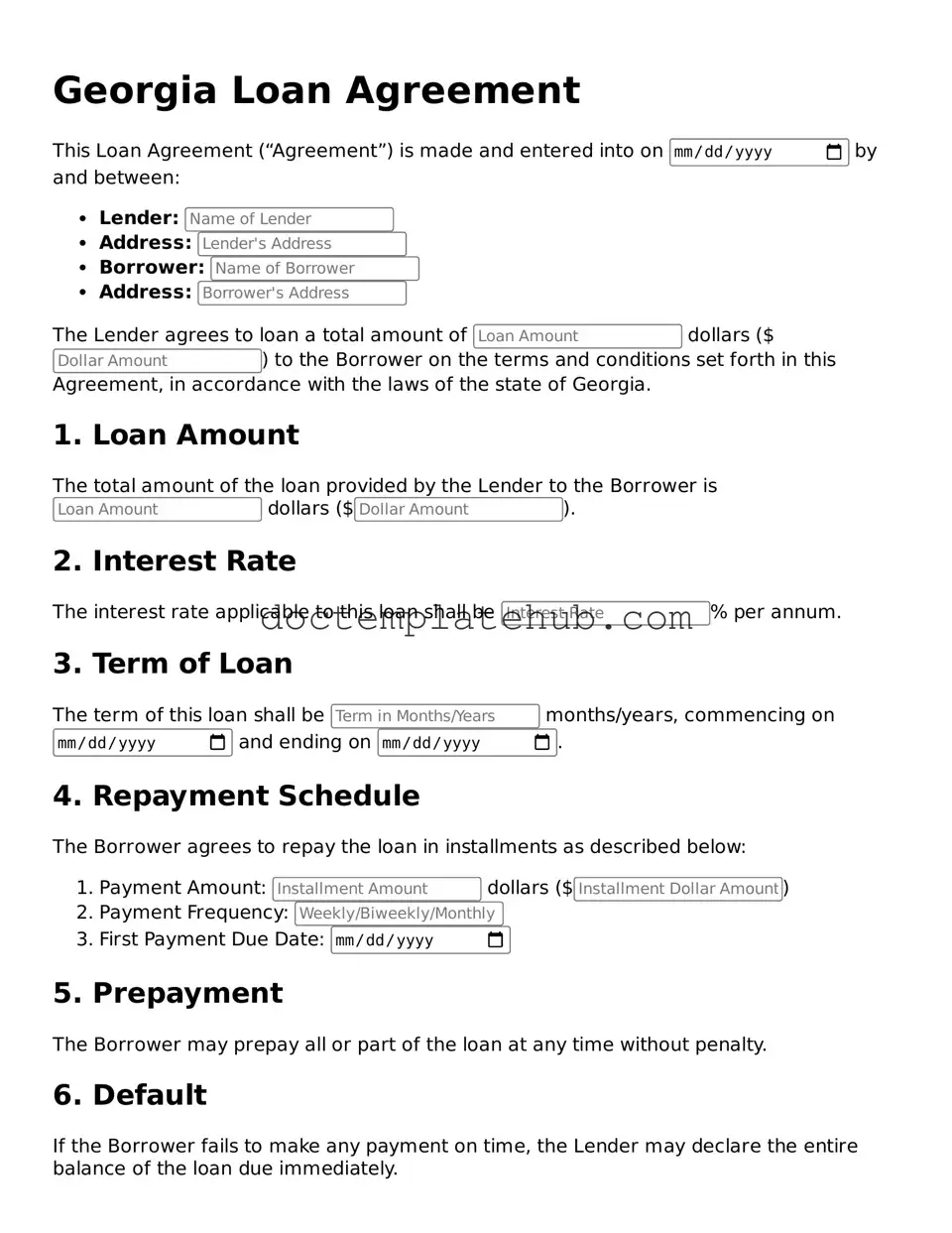What is a Georgia Loan Agreement?
A Georgia Loan Agreement is a legal document that outlines the terms and conditions under which one party lends money to another. It includes details such as the loan amount, interest rate, repayment schedule, and any collateral involved. This agreement helps protect both the lender and the borrower by clearly stating their rights and responsibilities.
Who can use a Georgia Loan Agreement?
Anyone in Georgia who is involved in lending or borrowing money can use this agreement. This includes individuals, businesses, and financial institutions. Whether you are lending to a friend or entering into a business loan, having a written agreement is crucial.
What information should be included in the agreement?
The agreement should include the names and addresses of both parties, the loan amount, the interest rate, the repayment terms, and any fees or penalties for late payments. Additionally, it should specify the purpose of the loan and any collateral that secures the loan.
Is a Georgia Loan Agreement legally binding?
Yes, when properly executed, a Georgia Loan Agreement is legally binding. This means both parties must adhere to the terms outlined in the document. If one party fails to comply, the other party may take legal action to enforce the agreement.
Do I need a lawyer to create a Georgia Loan Agreement?
No, you do not necessarily need a lawyer to create a Georgia Loan Agreement. Many people choose to use templates or online services to draft their agreements. However, if your loan involves a significant amount of money or complex terms, consulting with a lawyer may be beneficial.
Can the terms of the agreement be changed after it is signed?
Yes, the terms can be changed, but both parties must agree to the changes. It is best to document any amendments in writing and have both parties sign the revised agreement to avoid misunderstandings in the future.
What happens if the borrower defaults on the loan?
If the borrower defaults, the lender has the right to take legal action to recover the owed amount. This may include filing a lawsuit or pursuing the collateral specified in the agreement. It is essential to understand the consequences of defaulting before entering into a loan agreement.
How is interest calculated in a Georgia Loan Agreement?
Interest can be calculated in various ways, such as simple interest or compound interest. The agreement should clearly state how interest will be calculated and when it will be applied. Understanding this can help both parties manage their financial expectations.
Can I use a Georgia Loan Agreement for personal loans?
Absolutely! A Georgia Loan Agreement can be used for personal loans between friends, family members, or even for personal loans from financial institutions. Having a written agreement helps clarify the terms and protects both parties.
Where can I find a Georgia Loan Agreement template?
You can find templates for Georgia Loan Agreements online. Many legal websites offer free or paid templates that you can customize to fit your needs. Ensure that any template you use complies with Georgia laws and is suitable for your specific situation.
